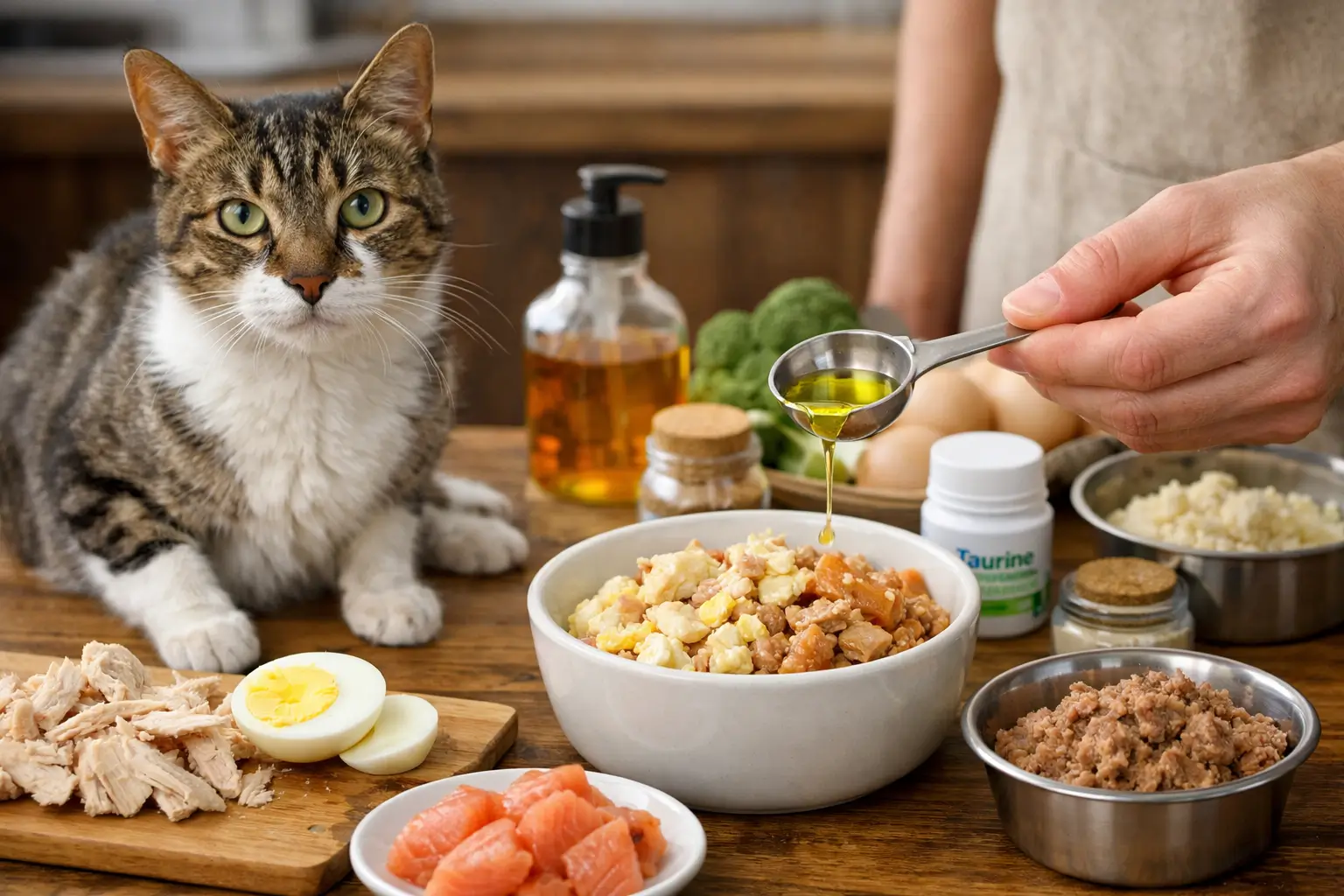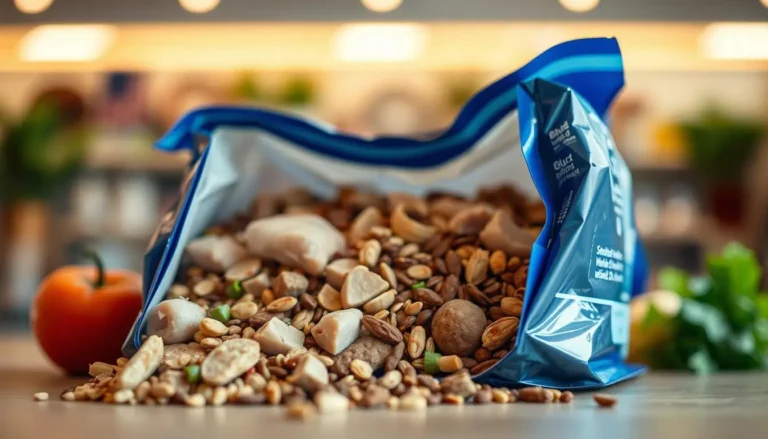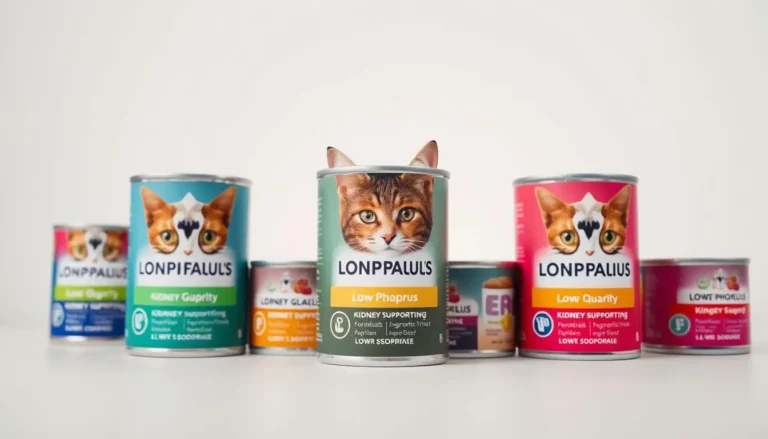Homemade cat food-Top 5 simple steps to prepare for beginners
When I first noticed my rescue cat, Oliver, looking a bit too thin despite eating regularly, I knew something had to change. Like many cat parents, I started researching homemade cat food as a way to provide more nutritious, calorie-dense meals that could help him thrive. What I discovered transformed not only Oliver’s health but also my entire approach to feline nutrition.
Table of Contents
If you’re reading this, you’re likely in a similar situation. Perhaps your beloved feline companion appears underweight, or maybe you simply want more control over what goes into your cat’s bowl. Whatever your reason, preparing nutritious feline snacks and complete meals at home can be incredibly rewarding—when done correctly.
In this comprehensive guide, I’ll walk you through everything you need to know about creating safe, balanced, and delicious homemade meals for your cat. We’ll explore the best high-calorie cat food options, discuss crucial safety considerations, and provide you with a clear roadmap to get started.
Important Medical Disclaimer: The information provided in this article is for educational purposes only and should never replace professional veterinary consultation. Before making any dietary changes, especially for cats with underlying health conditions, please consult with your veterinarian.
What Is a Cat Weight Gain Diet?
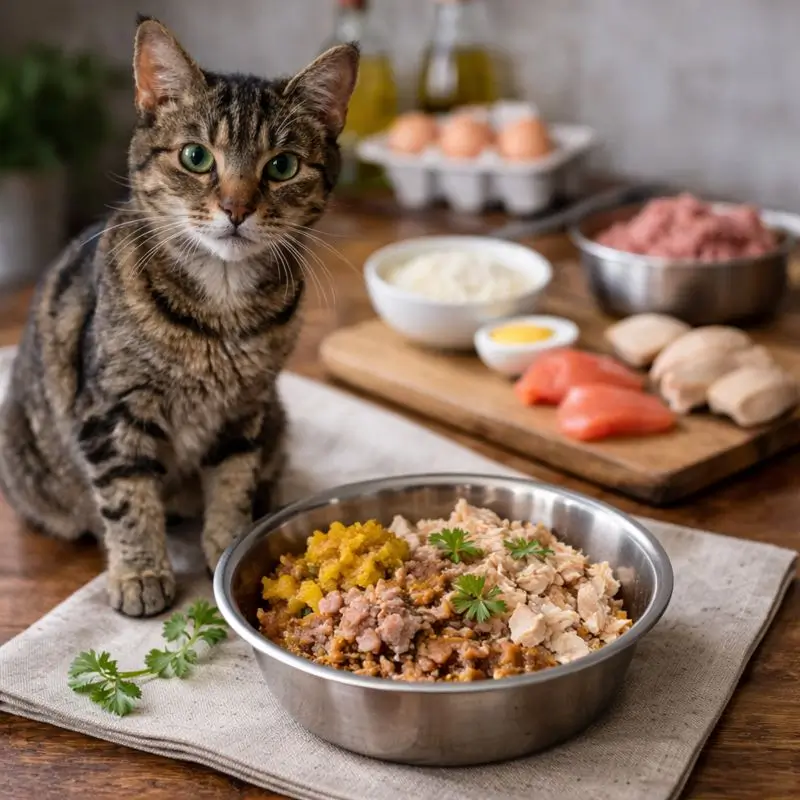
A cat weight gain diet is a carefully structured nutritional plan designed to help underweight felines achieve a healthy body condition through increased caloric intake. This approach typically combines high-calorie wet food, protein-rich ingredients like cooked eggs and plain chicken, and essential fatty acids from sources such as oily fish, all while ensuring complete nutritional balance under veterinary guidance.
Why Consider Homemade Cat Food for Your Feline Friend?
Over my years working in feline nutrition, I’ve seen countless cat owners turn to home-prepared meals for various compelling reasons. The desire to help underweight cats gain healthy mass ranks among the top motivations, but the benefits extend far beyond weight management.
Complete ingredient control stands as perhaps the most significant advantage. When you prepare your cat’s food at home, you know exactly what’s in every bite. No mysterious preservatives, no questionable by-products—just wholesome, identifiable ingredients.
Additionally, homemade diets allow for customization based on preferences and health needs. Some cats are notoriously picky eaters, and commercial foods simply don’t appeal to them. Others have sensitivities or allergies that make finding suitable store-bought options challenging.
However, I must be completely honest with you: preparing balanced homemade cat food requires commitment, research, and often veterinary supervision. Cats have very specific nutritional requirements, and an improperly formulated diet can cause serious health problems over time.
The Critical First Step: Visit Your Veterinarian
Before you even think about recipes or ingredients, there’s one non-negotiable step you must take—schedule a veterinary examination.
Here’s something that many cat owners don’t realize: unexplained weight loss in cats is frequently a symptom of underlying illness rather than simply inadequate nutrition. Throughout my career, I’ve seen numerous cases where well-meaning owners tried to fatten up their cats at home, only to later discover serious health conditions that required immediate treatment.
Common medical causes of feline weight loss include:
- Diabetes mellitus – Affects how your cat processes glucose
- Hyperthyroidism – An overactive thyroid gland
- Dental disease – Pain while eating leads to reduced food intake
- Gastrointestinal disorders – Including inflammatory bowel disease
- Kidney disease – Particularly common in older cats
- Cancer – Various forms can cause progressive weight loss
Your veterinarian will perform a thorough physical examination, likely recommend blood work, and rule out these conditions before approving any dietary changes. This step isn’t optional—it’s essential for your cat’s safety and well-being.
Top 6 Foods for Helping Underweight Cats Gain Weight
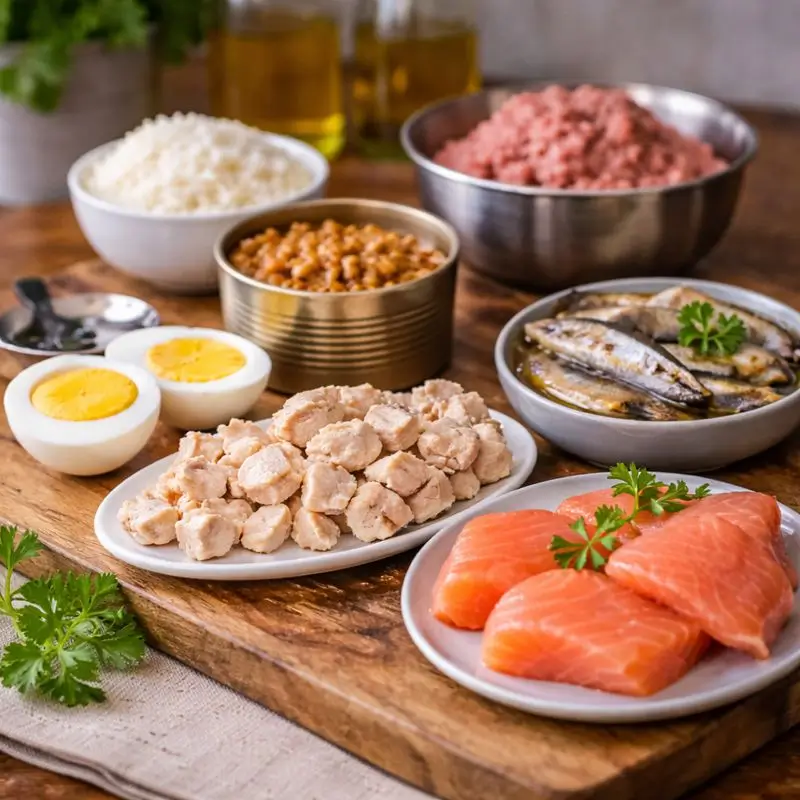
Once your veterinarian has cleared your cat for a weight-gain dietary approach, you’ll want to focus on nutrient-dense, calorie-rich foods. Here are my top recommendations based on years of experience.
1. High-Calorie Wet Food
Commercial high-calorie wet foods offer convenience combined with complete nutrition. These products are formulated to pack more energy into smaller portions, making them ideal for cats with decreased appetites.
Look for products labeled as “high-calorie” or “recovery” formulas. They typically contain higher fat content and concentrated nutrients.
2. Kitten Food for Adult Cats
Here’s a strategy many people overlook: kitten food is naturally calorie-dense because growing kittens have enormous energy requirements. Feeding kitten food to an underweight adult cat can be an effective short-term strategy for weight gain.
Kitten formulas contain approximately 30% more calories per cup than standard adult maintenance diets. However, this approach works best as a temporary measure rather than a permanent solution.
3. Cooked Eggs
Eggs are nutritional powerhouses that most cats find irresistible. They provide high-quality protein, essential fatty acids, and important vitamins including B12 and riboflavin.
Always serve eggs fully cooked—scrambled or hard-boiled without any added salt, butter, or seasonings. Raw eggs pose salmonella risks and contain avidin, which interferes with biotin absorption.
4. Plain Cooked Chicken
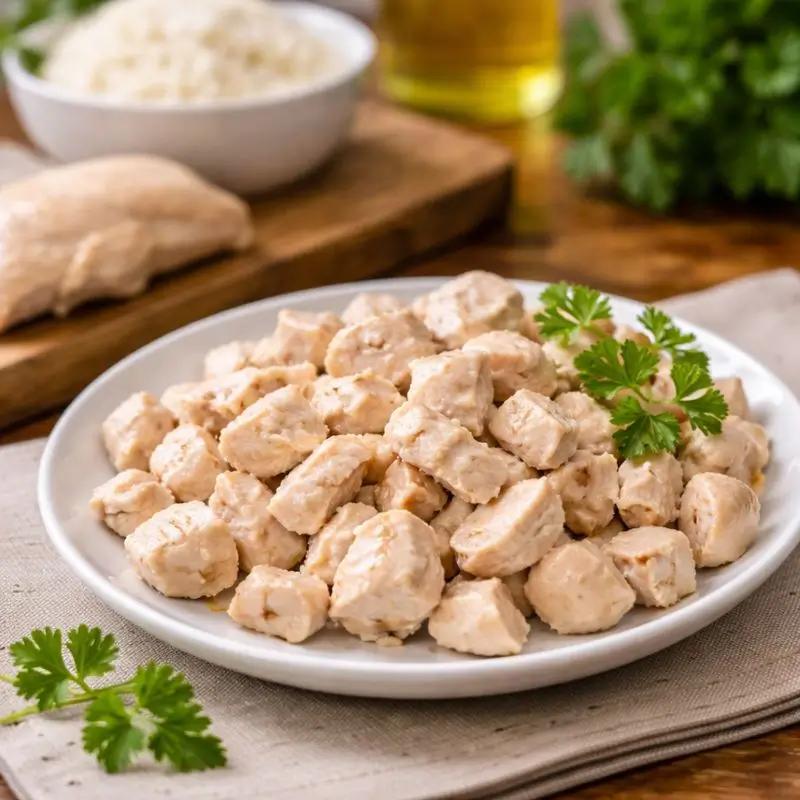
Lean, plain cooked chicken serves as an excellent protein source and makes a fantastic addition to your cat’s regular meals. The key word here is plain—no seasonings, no sauces, no skin.
Boiling or baking chicken breast provides a safe, digestible protein that can stimulate appetite in picky eaters.
Allergy Warning: While uncommon, chicken is actually one of the more frequent food allergens in cats. If you notice itching, digestive upset, or skin problems after introducing chicken, discontinue use and consult your veterinarian.
5. Oily Fish and Salmon
Fatty fish like salmon, sardines, and mackerel provide omega-3 fatty acids that support healthy skin, a glossy coat, and overall wellness. These fish are also naturally calorie-dense due to their fat content.
Serve fish cooked and boneless, never raw. Raw fish contains thiaminase, an enzyme that destroys thiamine (vitamin B1), potentially leading to serious neurological problems with regular consumption.
Allergy Warning: Fish allergies, while less common than you might expect, do occur in some cats. Monitor for adverse reactions when introducing fish to your cat’s diet.
6. Veterinary Recovery Diets
For severely underweight or recovering cats, veterinary-prescribed recovery diets offer the highest level of nutritional support. These specialized formulas are calorically dense and highly digestible, designed for cats recovering from surgery, illness, or malnourishment.
Brands like Hill’s a/d and Royal Canin Recovery are available through veterinary clinics and provide complete, balanced nutrition in an easily consumed form.
Critical Medical Warnings You Must Know
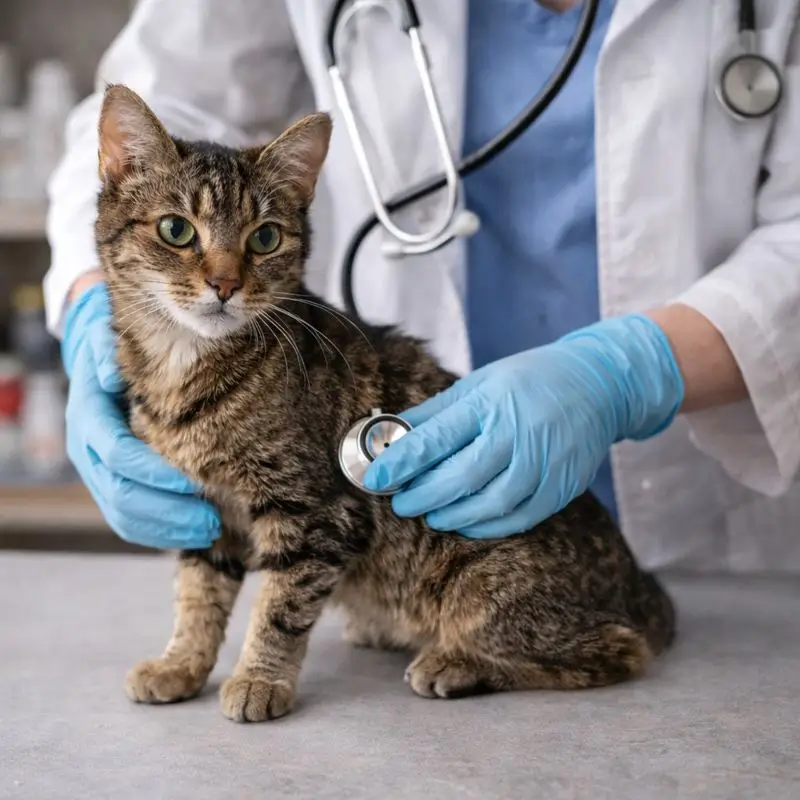
As someone deeply committed to feline health and safety, I cannot stress enough how important it is to understand that not all high-calorie foods are appropriate for all cats.
High Protein and Kidney Disease
If your cat has been diagnosed with Chronic Kidney Disease (CKD), a high-protein diet can actually accelerate kidney deterioration. Cats with CKD require carefully controlled protein levels—often lower than standard diets—to reduce the workload on their compromised kidneys.
Never put a CKD cat on a high-protein weight gain diet without explicit veterinary approval.
High Fat and Pancreatitis
Similarly, cats with a history of pancreatitis must avoid high-fat foods. The pancreas produces enzymes to digest fats, and excessive dietary fat can trigger painful and potentially life-threatening inflammation.
If your cat has had pancreatitis, stick to lower-fat protein sources and consult your veterinarian about appropriate caloric supplementation methods.
5 Simple Steps to Prepare Homemade Cat Food for Beginners
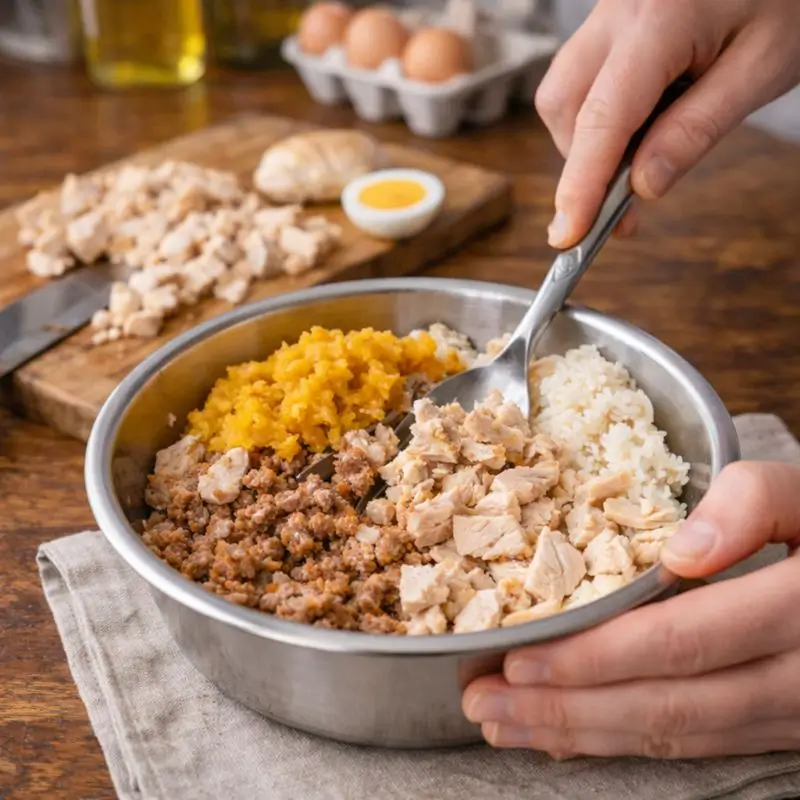
Now let’s get practical. Here’s my beginner-friendly process for preparing safe, nutritious homemade cat food.
Step 1: Gather Veterinary Guidance and Approved Recipes
Start by discussing your intentions with your veterinarian. Request specific recipe recommendations or ask for a referral to a veterinary nutritionist. Never use random recipes from the internet without professional verification—nutritional imbalances can cause serious harm over time.
Step 2: Source High-Quality Ingredients
Purchase fresh, human-grade ingredients from reputable sources. This includes quality proteins like chicken, turkey, or fish, along with any supplements your veterinarian recommends.
Essential supplements for homemade cat food typically include taurine (critical for heart and eye health), calcium, and various vitamins. Commercial supplement mixes designed for homemade cat food can simplify this process.
Step 3: Prepare and Cook Safely
Cook all meats thoroughly to eliminate bacteria and parasites. Avoid adding any seasonings, oils, or other additives unless specifically recommended by your veterinarian.
Use clean cutting boards, utensils, and preparation surfaces—just as you would when preparing food for human family members.
Step 4: Portion and Store Properly
Divide the prepared food into meal-sized portions. Refrigerate what you’ll use within 2-3 days and freeze the remainder. Proper storage prevents bacterial growth and maintains nutritional quality.
Thaw frozen portions in the refrigerator rather than at room temperature to ensure food safety.
Step 5: Transition Gradually and Monitor
Introduce homemade food gradually, mixing it with your cat’s current diet over 7-10 days. This slow transition helps prevent digestive upset and allows you to monitor for any adverse reactions.
Keep a feeding journal noting your cat’s weight, appetite, stool quality, and overall energy levels. Share this information with your veterinarian at follow-up appointments.
Foods That Are Toxic to Cats: Essential Reference Table
| Toxic Food | Why It’s Dangerous |
|---|---|
| Onions and Garlic | Cause oxidative damage to red blood cells, leading to anemia |
| Chocolate | Contains theobromine, toxic to cats’ cardiovascular and nervous systems |
| Grapes and Raisins | Can cause acute kidney failure |
| Xylitol (artificial sweetener) | Causes dangerous insulin release and liver failure |
| Alcohol | Even small amounts cause severe liver and brain damage |
| Caffeine | Leads to restlessness, rapid breathing, and heart palpitations |
| Raw Dough | Expands in the stomach and produces alcohol |
| Macadamia Nuts | Cause weakness, vomiting, and tremors |
Keep this list accessible in your kitchen as a quick reference.
Frequently Asked Questions About Homemade Cat Food

How often should I feed my underweight cat?
Rather than increasing portion sizes dramatically, I recommend offering smaller meals more frequently—typically 4-6 times daily. This approach prevents overwhelming the digestive system while increasing overall caloric intake.
Can I feed my cat a completely homemade diet long-term?
Yes, but only if the diet is nutritionally complete and balanced, ideally formulated with input from a veterinary nutritionist. Incomplete homemade diets can lead to serious deficiencies over months or years.
How quickly should my cat gain weight on a weight-gain diet?
Healthy weight gain is gradual. Expect approximately 1-2% of body weight per week under normal circumstances. Rapid weight gain can stress the liver and other organs, so patience is essential.
Are grain-free homemade diets better for cats?
Cats are obligate carnivores and don’t require grains, but grain-free isn’t automatically better. Small amounts of cooked grains like rice can provide digestible energy. Focus on high-quality protein as the foundation rather than worrying about grain content.
What if my cat refuses to eat homemade food?
Some cats are resistant to dietary changes. Try warming the food slightly to release aromas, mixing small amounts with their preferred food, or experimenting with different protein sources. Persistence and patience usually pay off.
Final Thoughts on Preparing Homemade Cat Food
Creating nutritious, calorie-dense meals for your beloved feline doesn’t have to feel overwhelming. By following these five simple steps and prioritizing veterinary guidance, you can confidently prepare homemade cat food that supports healthy weight gain and overall wellness.
Remember, every cat is unique. What works beautifully for one may not suit another. Stay observant, remain patient, and maintain open communication with your veterinary team throughout the process.
Your dedication to understanding your cat’s nutritional needs speaks volumes about your love for them. With the right approach, you can help your underweight companion achieve a healthy, happy weight—one homemade meal at a time.
Have questions or experiences to share about preparing homemade meals for your cat? Your veterinarian remains your best resource for personalized guidance tailored to your cat’s specific health needs.

